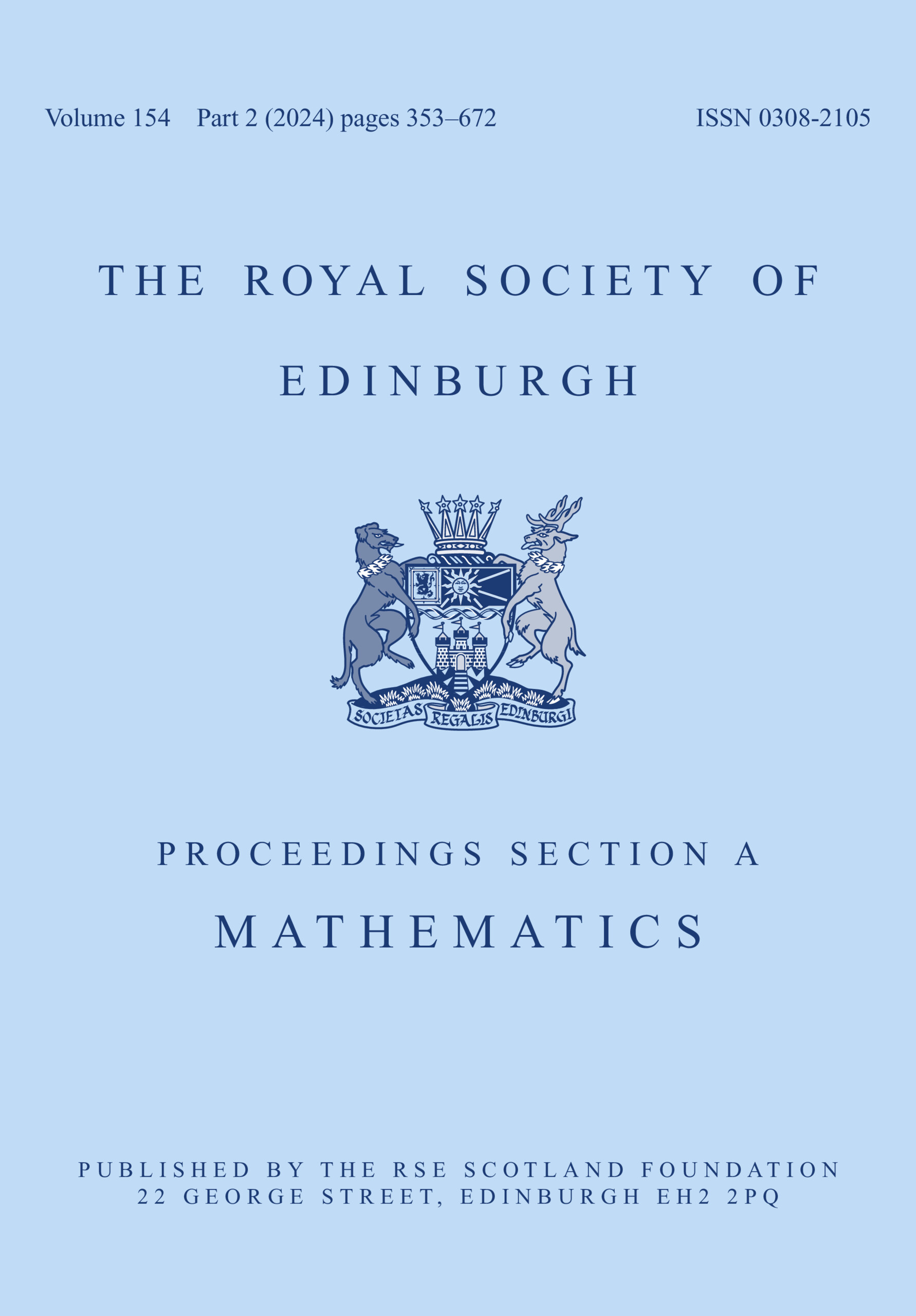No CrossRef data available.
Article contents
Existence and nonexistence of least energy positive solutions to critical Schrödinger systems with Hardy potential
Published online by Cambridge University Press: 26 August 2025
Abstract
We are concerned with the following coupled Schrödinger system with a Hardy potential in the critical case \begin{align*}\begin{cases}-\Delta u_{i}-\frac{\lambda_{i}}{|x|^2}u_{i}=|u_i|^{2^*-2}u_i+\sum_{j\neq i}^{3}\beta_{ij}|u_{j}|^{\frac{2^*}{2}}|u_i|^{\frac{2^*}{2}-2}u_i, ~x\in \mathbb{R}^N,\\u_i\in D^{1,2}(\mathbb{R}^N),\,\, N\geq 3,\,\, i=1,2,3,\end{cases}\end{align*}
\begin{align*}\begin{cases}-\Delta u_{i}-\frac{\lambda_{i}}{|x|^2}u_{i}=|u_i|^{2^*-2}u_i+\sum_{j\neq i}^{3}\beta_{ij}|u_{j}|^{\frac{2^*}{2}}|u_i|^{\frac{2^*}{2}-2}u_i, ~x\in \mathbb{R}^N,\\u_i\in D^{1,2}(\mathbb{R}^N),\,\, N\geq 3,\,\, i=1,2,3,\end{cases}\end{align*} $2^*=\frac{2N}{N-2}$,
$2^*=\frac{2N}{N-2}$,  $\lambda_i\in (0,\Lambda_N), \Lambda_N:= \frac{(N-2)^2}{4}$, and
$\lambda_i\in (0,\Lambda_N), \Lambda_N:= \frac{(N-2)^2}{4}$, and  $\beta_{ij}=\beta_{ji}$ for i ≠ j. By virtue of variational methods, we establish the existence and nonexistence of least energy solutions for the purely cooperative case (
$\beta_{ij}=\beta_{ji}$ for i ≠ j. By virtue of variational methods, we establish the existence and nonexistence of least energy solutions for the purely cooperative case ( $\beta_{ij} \gt 0$ for any i ≠ j) and the simultaneous cooperation and competition case (
$\beta_{ij} \gt 0$ for any i ≠ j) and the simultaneous cooperation and competition case ( $\beta_{i_{1}j_{1}} \gt 0$ and
$\beta_{i_{1}j_{1}} \gt 0$ and  $\beta_{i_{2}j_{2}} \lt 0$ for some
$\beta_{i_{2}j_{2}} \lt 0$ for some  $(i_{1}, j_{1})$ and
$(i_{1}, j_{1})$ and  $(i_{2}, j_{2})$). Moreover, it is shown that fully nontrivial ground state solutions exist when
$(i_{2}, j_{2})$). Moreover, it is shown that fully nontrivial ground state solutions exist when  $\beta_{ij}\ge0$ and
$\beta_{ij}\ge0$ and  $N\ge5$, but NOT in the weakly pure cooperative case (
$N\ge5$, but NOT in the weakly pure cooperative case ( $\beta_{ij} \gt 0$ and small, i ≠ j) when
$\beta_{ij} \gt 0$ and small, i ≠ j) when  $N=3,4$. We emphasize that this reveals that the existence of ground state solutions differs dramatically between
$N=3,4$. We emphasize that this reveals that the existence of ground state solutions differs dramatically between  $N=3, 4$ and higher dimensions
$N=3, 4$ and higher dimensions  $N\geq 5$. In particular, the cases of N = 3 and
$N\geq 5$. In particular, the cases of N = 3 and  $N\geq 5$ are more complicated than the case of N = 4 and the proofs heavily depend on the dimension. Some novel tricks are introduced for N = 3 and
$N\geq 5$ are more complicated than the case of N = 4 and the proofs heavily depend on the dimension. Some novel tricks are introduced for N = 3 and  $N\ge5$.
$N\ge5$.
Keywords
MSC classification
Information
- Type
- Research Article
- Information
- Copyright
- © The Author(s), 2025. Published by Cambridge University Press on behalf of The Royal Society of Edinburgh


